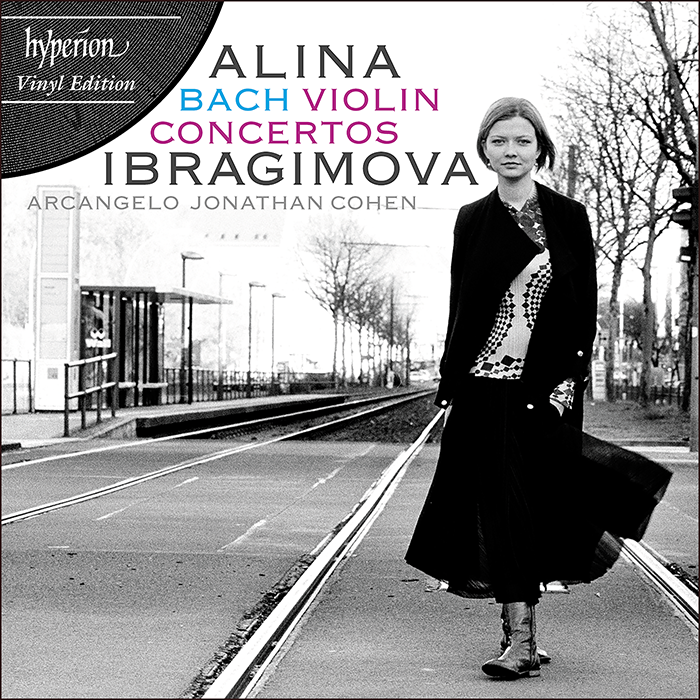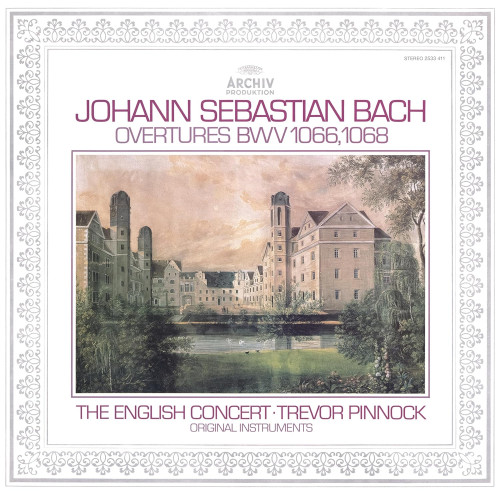Alina Ibragimova (violin)
Jonathan Cohen conducting Arcangelo
Hyperion LPA68068
1x 150g LP
J.S.Bach – Overtures BWV 1066, 1068
Trevor Pinnock/The English Concert
Archive 2533 411
1x 180g LP
By Dennis Davis

Browse the record collection of almost any audiophile these days and you might well conclude that Johann Sebastian Bach is no longer relevant to the musical tastes of 21st Century listeners. Yet Bach is both a musical colossus and pivotal to the entire classical tradition.
At the time of Bach’s death in 1750, Mozart’s birth was six years away, while Beethoven’s birth was a full twenty years into the future. Perhaps not surprisingly, the middle of the 18th Century marked a radical shift in music, moving from the late Baroque period into the Classical and then Romantic periods within the following century. It’s an evolution that marked a shift in the size of orchestras, the scale of works, dynamic range and the variety of instrumental colors available to the composer. From the narrow, audiophile perspective, those later, larger and more complex works offer a much better opportunity to show off today’s ever larger and more complex audio equipment. But if you put fireworks ahead of musical worth, some of the greatest music ever recorded goes up in smoke! And that’s where Johann Sebastian comes into the conversation . . .
Although the bulk of Bach’s music was religious in nature, he also wrote a substantial (and incredibly influential) body of instrumental music. At that time, such music was intended for performance in the home. Although “home” included the musical salons of the composer’s patron’s palaces, even those venues were still intimate compared to the modern symphony hall, which really only came into existence well into the 19th Century.
 Bach’s music went largely unheard for a century after his death, but with the development of larger public performance venues and more sophisticated publishing technology, his music soon elevated him to the pinnacle of Western musical immortals. Unlike later romantic works, the beauty of Bach’s music is based in equilibrium rather than dynamic contrast. That might be a hard sell when it comes to modern audio equipment but, for me, recorded music’s ability to captivate and astonish began with Bach’s orchestral music.
Bach’s music went largely unheard for a century after his death, but with the development of larger public performance venues and more sophisticated publishing technology, his music soon elevated him to the pinnacle of Western musical immortals. Unlike later romantic works, the beauty of Bach’s music is based in equilibrium rather than dynamic contrast. That might be a hard sell when it comes to modern audio equipment but, for me, recorded music’s ability to captivate and astonish began with Bach’s orchestral music.
Three of Bach’s concertos for violin have survived—two written for one violin soloist and a third for two soloists (although other, often keyboard works have been transcribed for strings). These violin concertos occupy a special place in my record collection. Back in 1972, my record collection had expanded to over a hundred discs! With personal computers still a figment in the imagination of science fiction buffs, I started a card catalog to keep track of this vast musical trove. I created a 3 x 5 card for each LP, with reference data and a catalog number. The number, which consisted of a year followed by a disc number, was typed on a label and applied to each jacket. My copy of Eduard Melkus leading the Capella Academica Wien playing BWV 1041-43 (Archiv 2533 075) bore the ID sticker “72/001”, indicating that it was the first LP I entered in my first index. Since that time, I hasten to add, my listing has been transferred to a computer database – and I’ve abandoned the nasty habit of applying stickers to record jackets!

